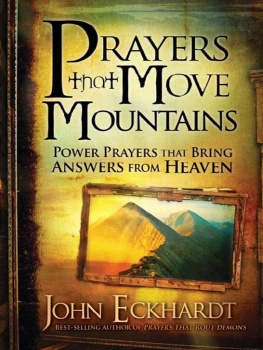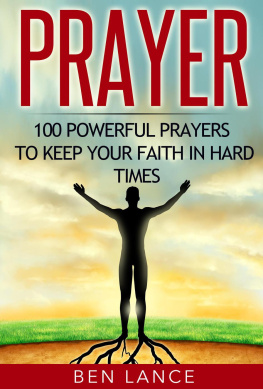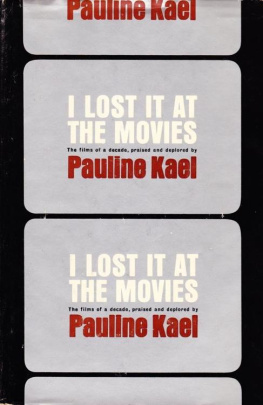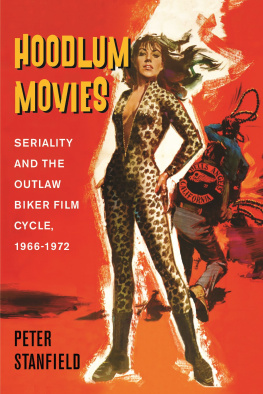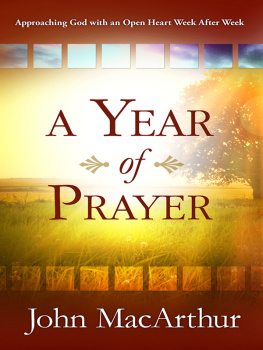FOREWORD
Matt Zoller Seitz

W henever I speak to groups about movies or criticism, I am invariably asked which critics I think people should be reading. I suggest a few names, often people who write for major publications or online journals of note. But then I tell them that if theyre interested in form as well as content, and in the relationship between the twothat is, if theyre looking for actual criticism as opposed to reviews, but written in language that can be understood by somebody who didnt go to film schoolthen they should be reading critics who write for a religious or spiritual audience.
I suggest this not because I am particularly religious myselfthough I do believe theres more to life than what we can scientifically quantifybut because theres a disconnect between what marketers have told Christian audiences are Christian films (a narrow slice of mostly bland, ineptly made, and insufferably preachy bits of product) and the ones recognized by critics such as Josh Larsen, whose extraordinary book you are about to read. And a critic such as Larsen writes much more perceptively about what a film actually is, what it contains, what it says, and how it says it, than all but a handful of critics who dont carry the difficult responsibilities that spiritually minded critics shoulder every day of the week.
The committed filmgoer who is also a committed Christian occupies a uniquely precarious position within film culture. Much arts criticism is at best coolly secular or indifferent to faith, and at worst actively hostile to most forms of organized religion, as well as to the notion that the experience of the uncanny or inexplicable or intuitive or mysterious might be applicable to daily life as well as to fictions that involve wizards, witches, Jedi, demons, and prophets.
A critic such as Larsen also encounters resistance (and sometimes hostility) from that sector of the audience that is mainly interested in knowing what sorts of films wont offend their faith or their sense of propriety, or force them to explain things to their children that they would rather not have to discuss. To this kind of viewer, who thinks of criticism mainly as a consumer guide, criticism of the kind that Larsen practices so well can only provoke discomfort, or the sort of introspection that leads to discomfort, and who wants to feel uncomfortable?
Caught between the proverbial rock and a hard place, Larsen slips free and embarks on his own journey. Like a pilgrim in a novel or poem from long ago, Larsen doesnt just head directly into the nearest house of worship in the town where he was born and has never left, pick up a prescribed text, and start reciting the old tried and true words, chapter-and-verse. He looks up at the sky and off toward the trees, not just down at the text. He seeks out life experiences he could never imagine on his own and scrutinizes them with an open mind and an attentive ear. He roams. Hes a traveler. A seeker. He is curious and wise, but never self-regarding. He sees faith and finds God in places you might not necessarily expect, and locates lessonsmore often questionsin quite a few films that you wouldnt immediately describe as being concerned with such things.
And Larsen never makes the mistake of assuming that because a film contains subject matter that some might consider objectionable, it cannot possibly be of interest to a viewer who cares about spiritual matters. The stories of sinners often have as much to tell us about the human condition as the stories of saintsusually more, because even on our best days, most of us are closer to sinner than saint: a work in progress, doing the best we can to confront the big issues, but often just kind of muddling through, doing the best we can.
And so youll find Do the Right Thing in here, and Close Encounters of the Third Kind, and Avatar, and Rushmore, and The Life Aquatic with Steve Zissou, and Top Hat, and A Hard Days Night, as well as the filmographies of Hayao Miyazaki and David Lynch, Krzysztof Kielowski and Martin Scorsese, Terrence Malick and Frank Capra. Larsen writes about love, loss, grief, suffering, and endurance. He writes about ecstasy and abandon, shame and guilt. He finds all of life in movies, even in movies that outwardly seem to have little to do with life as most of us know it, and he connects it back to scripture, to a rich tradition of spiritually inclined literature and visual art, to his own experience, to the history of this country and others, and to faiths besides Christianity. He can read a film as if it were a sacred text or admire it like a cathedral; other times he seems to have moved into it and lived inside it long enough to absorb its sounds and smells and memorize the way the sunlight hits the bedroom floorboards.
The result is an essential book for anyone who thinks of cinema as a place of introspection as well as escapism, and believes that you can find signs and miracles anywhere if you know how to look for them.
--- CHAPTER ONE ---
MOVIES ARE PRAYERS?

M ovies can be many things: escapist experiences, historical artifacts, business ventures, and artistic expressions, to name a few. Id like to suggest that they can also be prayers.
What, exactly, is prayer? You already know. Youve prayed, even if you havent set foot in a church for years (or ever). Youve longed, youve desired, youve marveled, youve groaned. Youve looked around at the beauty of the world, as the Welsh miners do in How Green Was My Valley, and said, Wow. Youve seen great suffering, as Sheriff Ed Tom Bell does in No Country for Old Men, and asked, Why? Who is it that you and the miners are praising? Why are you and the sheriff bothering to complain?
Prayer is a human instinct, an urge that lies deep within us. Religion came along to nurture, codify, and enrich it. Christians look to the Lords Prayer, given by Jesus, as one model for structuring communication with God (Mt 6:9-13). A testimony of praise and an expression of yearning, a confession of sin and a pledge of obedience, the Lords Prayer addresses both the nature of God and our desire to be in relationship with him. It is a beautiful encapsulation of our instinctual desire to seek the divine.


